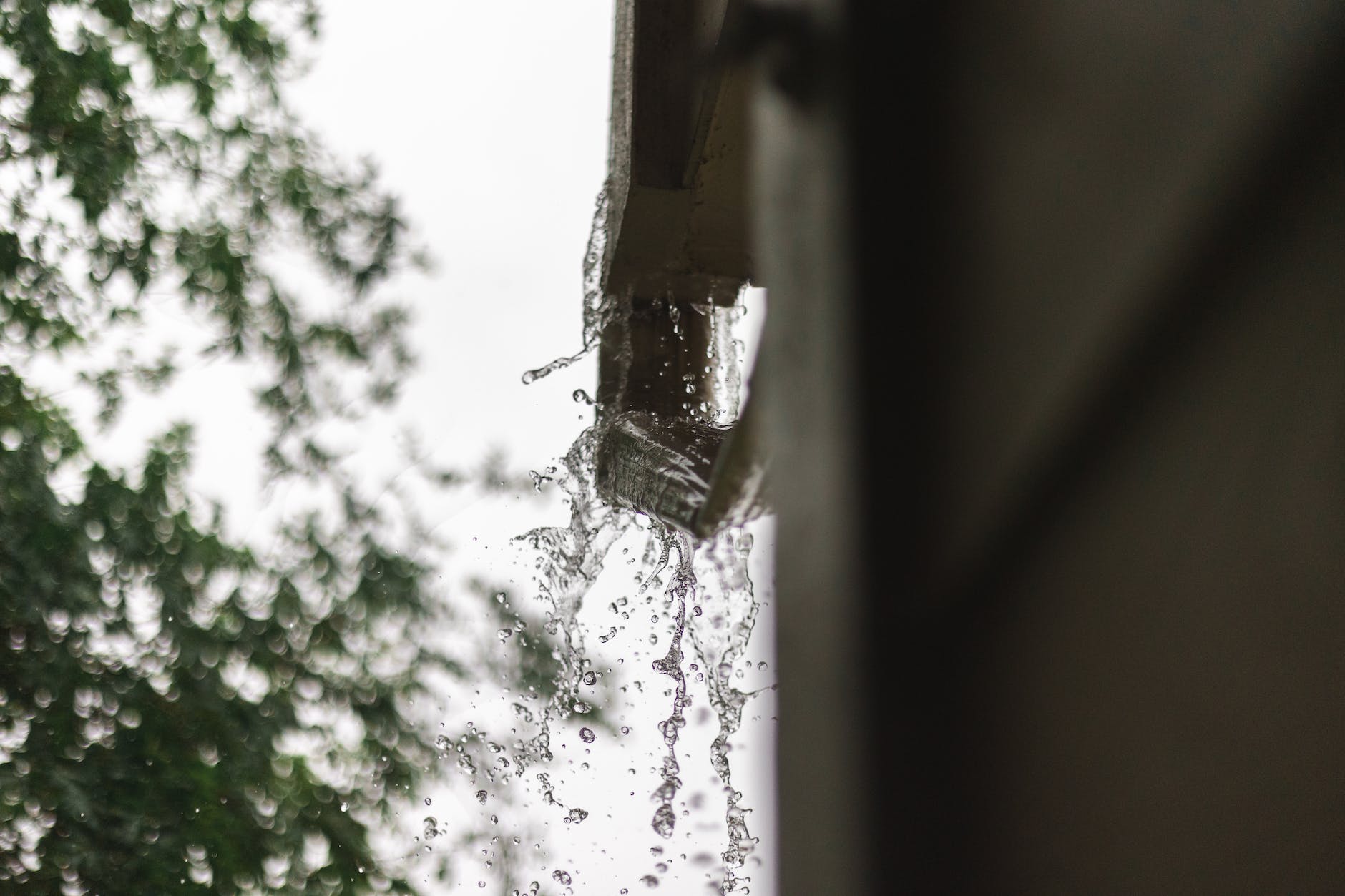How far apart should gutter screws be ? The spacing of gutter screws plays a crucial role in ensuring the stability and effectiveness of your gutter system. Typically, gutter screws should be spaced at intervals of 24 to 36 inches along the length of the gutter. This spacing provides ample support to prevent sagging or bowing of the gutter, especially when it accumulates water or debris. However, factors such as local weather conditions, the weight of snow or ice, and the type of material used for the gutter may influence the ideal spacing.
It’s essential to refer to the manufacturer’s guidelines for your specific gutter system and consider environmental factors to determine the most appropriate spacing for the screws. Properly spaced screws contribute to the longevity and functionality of your gutter system, ensuring it effectively channels water away from your home.
Why Are Gutters Beneficial to a Home?
Gutters are crucial components for maintaining the structural integrity and longevity of a home. Their primary benefit lies in efficiently directing rainwater away from the roof and foundation. By doing so, gutters prevent water-related issues such as erosion, basement flooding, and soil destabilization. Properly installed gutters also protect exterior surfaces from water damage, preventing issues like rotting wood, mold growth, and paint deterioration. Additionally, well-maintained gutters help prevent soil erosion around the foundation, preserving the stability of the home’s structure. Ultimately, gutters play a vital role in safeguarding a home against potential water damage, ensuring a dry and secure environment for homeowners.
How to Install Gutters on a Home
Installing gutters on a home is a manageable DIY project that requires careful planning and attention to detail. Here’s a step-by-step guide to guide you through the installation process. Begin by accurately measuring the lengths where you intend to install the gutters and determine the ideal slope for water flow. Purchase the necessary materials, including gutters, downspouts, hangers, screws, and elbows. Start by attaching the gutter hangers to the fascia and spacing them according to the manufacturer’s guidelines. Next, snap or screw the gutter sections into the hangers, ensuring a slight downward slope towards the downspout. Install the downspouts, cutting them to the desired length, and attach elbows as needed.
Make sure the downspouts direct water away from the foundation. Use sealant or caulking to seal the joints and corners, preventing leaks. Finally, test the gutter system by running water through it and make any necessary adjustments. Proper installation ensures that gutters effectively divert rainwater away from the home, preventing potential water damage and enhancing the overall durability of the property. If unsure, consulting with a professional or referring to detailed installation guides can provide additional guidance.
What Are Gutter Hangers?
Gutter hangers are essential components of a gutter system, serving as the support system that secures the gutters to the fascia or roofline of a building. These hangers play a crucial role in maintaining the proper alignment and slope of the gutters, ensuring efficient water drainage. There are various types of gutter hangers, each designed for specific installation methods and gutter styles. Common types include spike and ferrule hangers, strap hangers, and hidden hangers. Spike and ferrule hangers consist of long nails (spikes) driven through a tube (ferrule) to attach the gutter to the fascia. Strap hangers are metal straps that wrap around the gutter and are fastened to the roof or fascia.
Hidden hangers are concealed within the gutter, providing a sleek and streamlined appearance. The choice of gutter hangers depends on factors such as the type of gutter material, roof structure, and the overall aesthetic preferences of the homeowner. Properly installed gutter hangers are crucial for the stability and longevity of the gutter system, ensuring it can withstand the weight of water, debris, and external elements while maintaining optimal functionality. Regular inspection and maintenance of gutter hangers are essential to prevent issues like sagging or misalignment, which could compromise the effectiveness of the entire gutter system.
5 Tips for Installing Gutters on a Home
Choose the Right Gutters
Selecting the appropriate gutters is the first crucial step in a successful installation. Consider factors such as the local climate, the amount of rainfall, and the architectural style of your home. Different gutter materials, such as aluminum, vinyl, or steel, offer varying levels of durability and aesthetic appeal. Ensure that the chosen gutters can effectively handle the expected water volume and are compatible with your home’s design.
Slope Calculation
Achieving the correct slope for your gutter system is essential for efficient water drainage. Plan for a slope of at least 1/4 inch per 10 feet of gutter length to ensure water flows toward the downspouts. This slight incline prevents water from pooling or standing in the gutters, reducing the risk of damage and enhancing the overall effectiveness of the system.
Gutter Placement
Proper gutter placement is critical to channel water away from vulnerable areas of your home. Install gutters along the roofline, ensuring they capture water runoff effectively. Please pay attention to the positioning of downspouts, placing them at corners and intervals to facilitate proper drainage. Strategically place gutters to direct water away from foundations, entrances, and sensitive landscaping.
Hanger Spacing
Adequate support for your gutters is essential to prevent sagging and ensure longevity. Determine the appropriate spacing for gutter hangers based on the material and style of your gutters. Typically, hangers should be spaced every 24 to 36 inches along the length of the gutter. Adjust the spacing as needed, considering factors like local weather conditions and the potential weight of snow or ice.
Flashing Installation
Proper flashing installation is crucial for preventing water infiltration behind the gutters. Install flashing along the roofline and behind the gutters to create a waterproof barrier. This helps protect the fascia and soffit from water damage, ensuring the structural integrity of your home. Pay attention to details like overlapping joints and using the appropriate sealants to create a watertight seal.
FAQs about How far apart should gutter screws be
Q: How far apart should gutter screws be spaced for optimal support?
A: The spacing of gutter screws depends on various factors, including the type of gutter material, local weather conditions, and the potential weight of snow or ice. In general, gutter screws are often spaced at intervals of 24 to 36 inches along the length of the gutter.
Q: What happens if gutter screws are spaced too far apart?
A: If gutter screws are spaced too far apart, the gutter may lack adequate support, leading to sagging or bowing. Insufficient support can compromise the effectiveness of the gutter system and potentially cause damage to the fascia, soffit, or the gutter itself.
Q: Can I use fewer screws for lightweight gutter materials?
A: While lightweight gutter materials may not require the same level of support as heavier materials, it’s still important to follow manufacturer recommendations for screw spacing. Using fewer screws than recommended can lead to instability and reduced durability.
Q: How does local climate impact gutter screw spacing?
A: In areas with heavy snowfall or ice accumulation, it’s advisable to space gutter screws more closely to provide additional support. The weight of snow and ice can place extra stress on the gutter system, and proper screw spacing helps distribute the load evenly.
Q: Are there specific guidelines for screw spacing with hidden gutter hangers?
A: Yes, hidden gutter hangers may have specific guidelines for screw spacing. Manufacturers typically provide recommendations for the installation of hidden hangers to ensure optimal support while maintaining a clean and streamlined appearance.
Q: Can I adjust gutter screw spacing for different sections of the gutter system?
A: It’s generally recommended to maintain consistent screw spacing throughout the gutter system for uniform support. However, specific adjustments may be made based on variations in the gutter material, local conditions, or other factors.
Q: Should I consult a professional to determine the ideal gutter screw spacing?
A: If you’re unsure about the ideal gutter screw spacing for your specific situation, consulting with a professional gutter installer or following manufacturer guidelines is advisable. Professionals can assess factors like local climate and gutter material to provide tailored recommendations.





